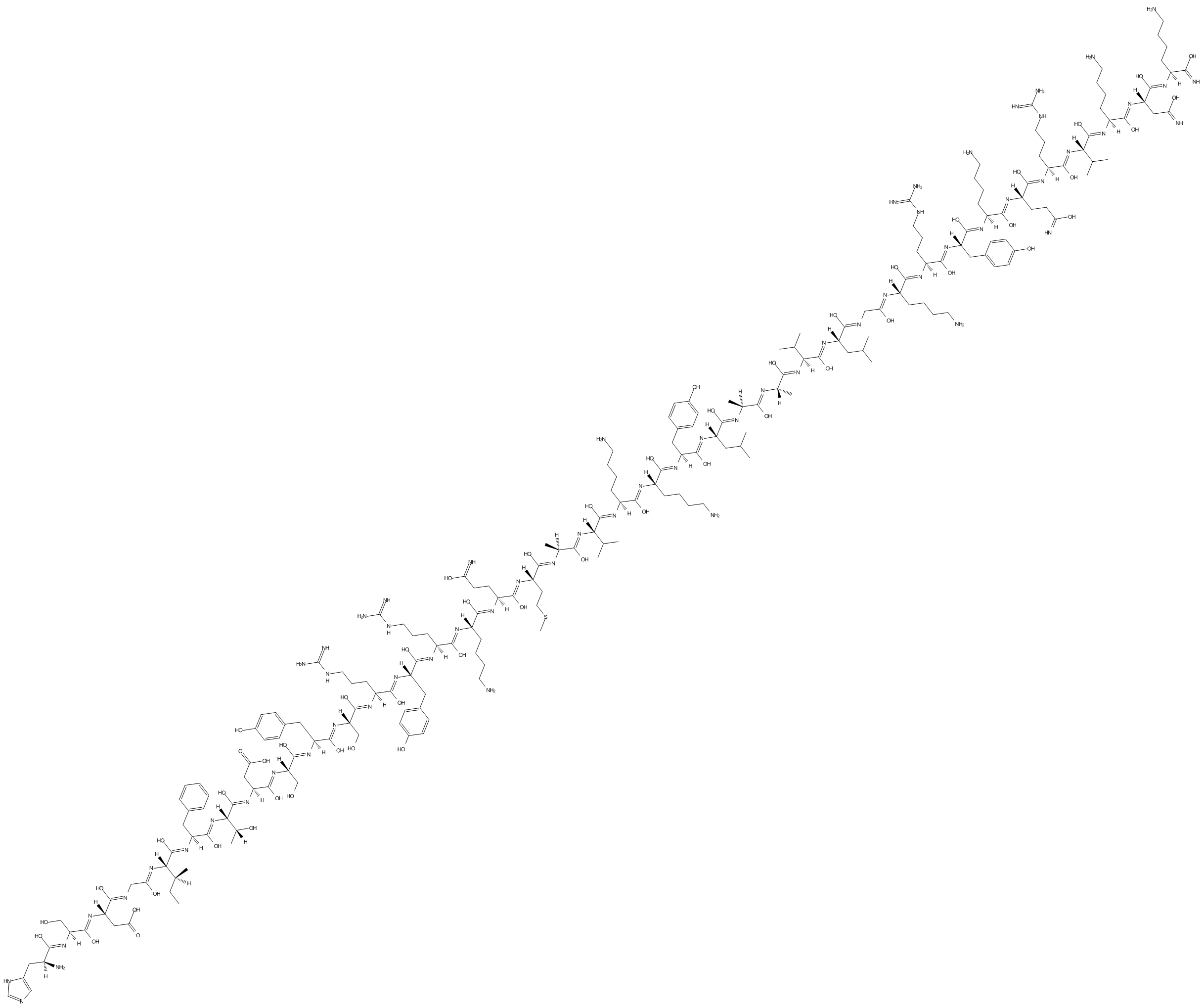PACAP 1-38 |
| Catalog No.GC16168 |
PACAP 1-38 is a neuropeptide with 38 amino acid residues.
Products are for research use only. Not for human use. We do not sell to patients.

Cas No.: 137061-48-4
Sample solution is provided at 25 µL, 10mM.
PACAP (1-38), human, ovine, rat is a neuropeptide with 38 amino acid residues. PACAP (1-38) binds to PACAP type I receptor, PACAP type II receptor VIP1, and PACAP type II receptor VIP2 with IC50s of 4 nM, 2 nM, and 1 nM, respectively.
PACAP (1-38), human, ovine, rat is a fragment of pituitary adenylate cyclase activating polypeptide[1]. PACAP (1-38) shows high affinity for PACAP specific (PAC1) receptor in membranes from various tissues including the endocrine pancreas[2]. In vitro, PACAP (1-38) relaxes guinea-pig and rabbit tracheal smooth muscle precontracted by histamine and by acetylcholine. PACAP (1-38) also increases adenosine 3':5'-cyclic monophosphate (cyclic AMP) in tracheal smooth muscle, providing a possible mechanism for the relaxant effect of PACAP (1-38)[3].
PACAP (1-38) alone in sham animals does not result in changes in any of the retinal layers. PACAP (1-38) dissolved in solutio ophthalmica cum benzalkonio leads to significant protection in the retina in bilateral common carotid artery occlusion (BCCAO)-lesioned retinas; retinas treated with PACAP (1-38) eye drops have preserved structure compared to control retinas. OLM-ILM (outer limiting membrane-inner limiting membrane) distance is reduced by 49.7% (p<0.001) in BCCAO retinas compared to sham controls, but it is only 40.6% (p<0.001) in the eyes treated with PACAP (1-38) eye drops. A protection to a similar degree is found in the inner nuclear layer (INL) (BCCAO: 38.5%, PACAP (1-38): 30.5%; p<0.001), and inner plexiform layer (IPL) (BCCAO: 64.8%, PACAP (1-38): 38.2%; p<0.05), while no statistically significant attenuation of the damage is observed in the outer nuclear layer (ONL) (BCCAO: 36.5%, PACAP (1-38): 37.7%) or outer plexiform layer (OPL) (BCCAO: 53.0%, PACAP (1-38): 48.2%). The number of cells in the ganglion cell layer (GCL) is significantly decreased after BCCAO by 52.4% (p<0.05) and is significantly ameliorated by PACAP (1-38) eye drops (decreased by 25.9%; p<0.05)[4].
References:
[1]. Gourlet P, et al. Fragments of pituitary adenylate cyclase activating polypeptide discriminate between type I and II recombinant receptors. Eur J Pharmacol. 1995 Dec 4;287(1):7-11.
[2]. Yamaguchi N. Pituitary adenylate cyclase activating polypeptide enhances glucose-evoked insulin secretion in the canine pancreas in vivo. JOP. 2001 Sep;2(5):306-16.
[3]. Lindén A, et al. Inhibition of bronchoconstriction by pituitary adenylate cyclase activating polypeptide (PACAP 1-27) in guinea-pigs in vivo. Br J Pharmacol. 1995 Jul;115(6):913-6.
[4]. Werling D, et al. Passage through the Ocular Barriers and Beneficial Effects in Retinal Ischemia of Topical Application of PACAP (1-38) in Rodents. Int J Mol Sci. 2017 Mar 21;18(3). pii: E675.
Average Rating: 5 (Based on Reviews and 16 reference(s) in Google Scholar.)
GLPBIO products are for RESEARCH USE ONLY. Please make sure your review or question is research based.
Required fields are marked with *




















